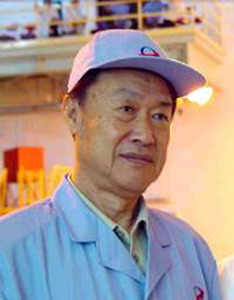
Wang Yongzhi
The scientists of China's manned space program hope to complete three major
tasks during the Shenzhou VI mission, which is scheduled to begin this morning.
"The first task is to acquire more basic technology in manned space flight,
including flights that involve more than one person and last more than one day,"
said Wang Yongzhi, chief designer of China's manned space program.
The second task is to push forward scientific experiments in space, said
Wang.
"Space provides precious opportunities to conduct scientific experiments and
produce materials, industrial goods and medicines because of the vacuum and
micro-gravity conditions there, which are not easily available on the ground,"
he said.
He said unlike the previous launches of Shenzhou spacecraft, humans will take
part in this round of experiments.
"It holds the promise of making more discoveries," said Wang, 73.
The third task is to further evaluate the performance of various parts of the
system for future improvements.
"We'll make further improvements to the spacecraft based on the results of
our evaluation," he said.
"Now the rocket, spacecraft and various types of support facilities on the
ground are in good condition. I believe this flight will be successful," he
said.
Wang said China has become a major player in aerospace technology, but still
lags far behind the United States and Russia.
"Manned space flight is one of the most sophisticated and difficult aerospace
projects in the world. It's the embodiment of the comprehensive strength of a
country," he said.
He said China's basic industry, especially the sectors related to raw
materials, components and techniques, remain behind developed countries. As a
result, the level of China's aerospace science and technology lags far behind
the United States and Russia.
But, he said, China is quickly catching up as it embraces a leap-frog
development mode.
"Although more than 40 years late, our spacecraft is of the same
technological level as their near-Earth orbit spacecraft at present," said Wang.
"In addition, our spacecraft has its own good features. For instance, our
orbital module can remain in orbit as a scientific application satellite after
the spacecraft completes its orbital flight, instead of being jettisoned," he
said.



